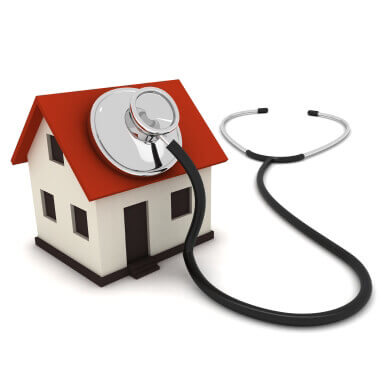Rehabbing Real Estate: Unseen Dangers part 1

Rehabbing Can be Fun, But The Fun Goes Out the Window With Health Hazards
Rehabbing real estate is a lucrative business for real estate investors, especially in light of the current market. But smart investors know that profitable investments require a little bit of elbow grease.
Many investors outsource their rehabbing efforts to contractors or builders, but there are an equal number who really enjoy the nitty-gritty of getting their hands dirty; sometimes that’s the biggest part of the fun.
For those investors who really love the rehabbing part of flipping real estate, getting involved in the actual labor of construction and rehabilitation means paying attention to some of the health hazards that can go along with turning around an older or somewhat debilitated house.
Great profit margins, after all, aren’t going to get you down the road to wealth building if all that extra cash goes into rehabbing your body after submitting it to health risks.
Most people are aware of air quality issues when it comes to rehabbing or construction; lesser-known dangers abound, however, in the form of toxic or potentially explosive, materials.
If you want to take the hands on approach to your rehabbing projects, it would be wise to familiarize yourself with the potential, unseen health hazards and take measures to avoid them.
Mold
Whatever the type or amount of mold you’re dealing with, the first step is to get it cleaned up and deal with the causative problem. Never work in a mold-ridden house without a certified respirator and gloves; since biological reactions to mold vary significantly depending on each individual it is important to take precautions. Although usually more of a long-term exposure problem (most commonly causing severe allergic reactions), mold has nonetheless been known to cause severe and even deadly reactions for those who have an extreme sensitivity to it.
Mold may be a terrific negotiating point when it comes to acquisition, but the savings won’t be worth it if the health hazard ends up being more costly in the end. This is one particular health hazard that no home is safe from and that must be dealt with before rehabbing can commence.
Mold will affect drywall, wood floors, natural carpet fibers and more; anywhere that moisture (even from the air in more humid climates) comes into contact with the home’s constructive features.
Though expensive, it is likely worth it to get a sampling done to determine that the problem has been eliminated before moving forward.
Volatile Organic Compounds
Many common building materials contain volatile organic compounds (VOCs). The following, though not complete, is short list of various materials that could contain VOCs.
• Wood flooring
• Carpeting
• Paint
• Paint Strippers
• Glues
• Cleaners
• Wood finishes such as varnish
Every rehab project will entail contact with some form of VOC.
The problem stems from inhalation of these various compounds (which are sometimes odorless, thus making them even more dangerous) and can cause severe reactions.
Whenever possible, try to work with low or zero-VOC paints and others finishing products, always wear a mask and goggles and make certain that work areas are well ventilated.
Asbestos
Many homes built prior to 1980 contain asbestos, as it was a popular building material. Generally found in walls, insulation for heating or plumbing, siding, roofs, window glaze drywall, plaster and joint compounds, it was often used because it was affordable and because of its tensile strength and sound absorption.
Unfortunately, it has been discovered that prolonged exposure can be the cause of such severe illnesses as cancer and mesothelioma.
Asbestos is one area where you should hire professional help; in fact, you may want to consider getting advice from an inspector or environmental consultant before you even make the investment. It isn’t expensive and its better to test suspect material and know what you’re dealing with in advance.
If you’ve already made the investment, you are going to have a good deal of work in store for you because you will need to replace infected areas. Houses that contain asbestos require abatement; you will need the assistance of a professional for its removal.
Lead
Though lead was declared an environmental health hazard and banned from use in paint in 1978, often rehab projects are such great deals because they are older homes.
Since prolonged exposure (often occurring during sanding wood trim or stripping old paint) can lead to nervous system damage, kidney damage and other issues, so therefore should be avoided. It is recommended by professionals that you simply replace the painted items, rather than strip and sand, thus avoiding exposure altogether. If the property is a historic building that must preserve its original trim, it is advisable to hire a lead-certified renovator to do the work safely.
Because it is so toxic, federal law requires that certified contractors do the removal of lead and, in fact, regulations state that the removal must be done before remodeling can commence if a home was built prior to 1978.
Do you want access to a nationwide database of Motivated Sellers? Not finding enough properties to flip in your neighborhood? Click Here to learn more about our online system.
